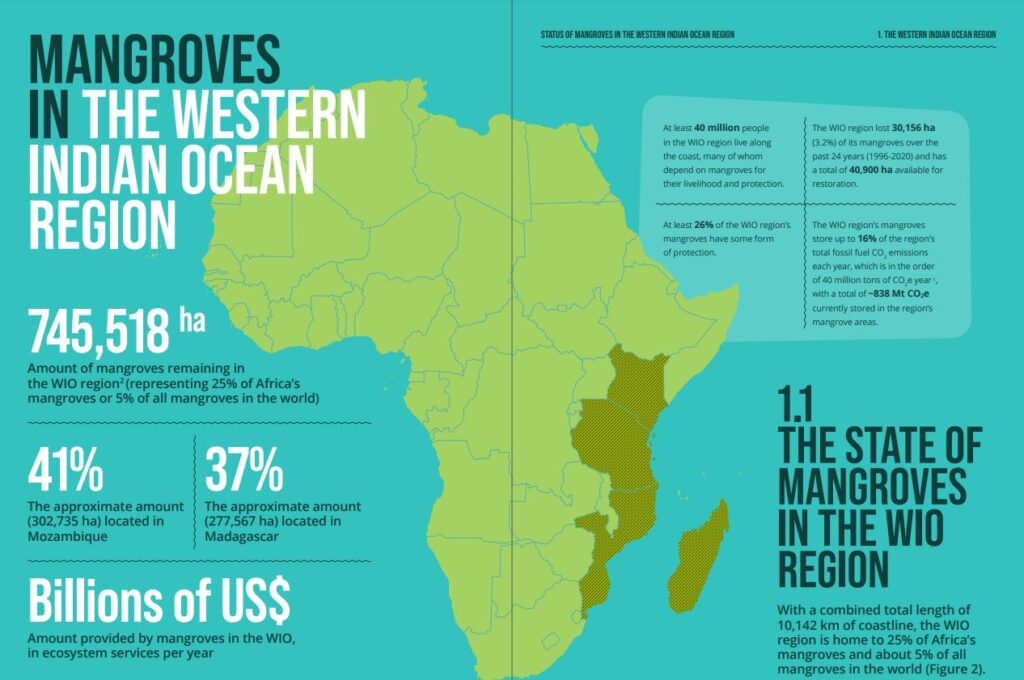The state of mangroves in the Western Indian Ocean report
Mangroves offer exceptional nature-based solutions for human-made problems with their ability to store carbon, build coastal resilience and provide millions of people with livelihoods. But mangroves loss due to logging, agriculture and impacts of cyclones and flooding continues to be a thread.
This report presents the most reliable and up-to-date information currently available on the spatial extent and recent changes in mangrove distribution in the Western Indian Ocean region. It is the first report to quantify and map mangrove blue carbon, drivers of change and restoration potential for the region. The report focuses on mangrove coverage in Kenya, Tanzania, Madagascar and Mozambique, which together are home to 5% of the world’s mangroves.

The report, gathered for the Global Mangrove Watch mapping tool, and analysed by Wetlands International and DAMCO Consultin, was produced as part of the Save our Mangroves Now! (SOMN) initiative, in collaboration with Global Mangrove Watch. SOMN is a joint initiative by the German Federal Ministry for Economic Cooperation and Development (BMZ), World Wildlife Fund (WWF), the International Union for Conservation of Nature (IUCN) and Wetlands International, bringing together governments, conservation specialists and coastal communities to reverse the decline of mangroves to restore biodiversity, protect livelihoods and mitigate against the impacts of the climate crisis.